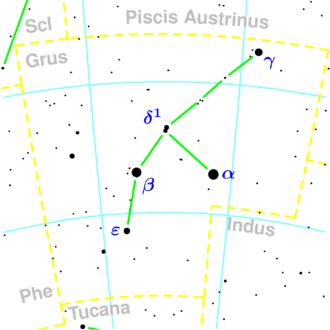NGC 7476
| Galaxy NGC 7476 |
|
|---|---|
|
|
|
| AladinLite | |
| Constellation | crane |
|
Position equinox : J2000.0 , epoch : J2000.0 |
|
| Right ascension | 23 h 05 m 11.9 s |
| declination | -43 ° 05 ′ 58 ″ |
| Appearance | |
| Morphological type | (R'_1) SB (r) b / HII |
| Brightness (visual) | 12.8 mag |
| Brightness (B-band) | 13.6 mag |
| Angular expansion | 1.4 '× 1.0' |
| Position angle | 175 ° |
| Surface brightness | 13.0 mag / arcmin² |
| Physical data | |
| Redshift | 0.009680 +/- 0.000010 |
| Radial velocity | 2902 +/- 3 km / s |
|
Stroke distance v rad / H 0 |
129 · 10 6 Lj 39,52,8 Mpc |
| history | |
| discovery | John Herschel |
| Discovery date | September 5, 1834 |
| Catalog names | |
| NGC 7476 • PGC 70427 • ESO 290-045 • MCG -07-47-015 • IRAS 23023-4322 • 2MASX J23051187-4305577 • SGC 230216-4322.2 • GALEX ASC J230511.85-430557.4 | |
NGC 7476 is a bar-spiral galaxy with extensive star formation regions of the Hubble type SBab in the constellation Crane in the southern sky . It is estimated to be 129 million light years from the Milky Way and about 60,000 ly in diameter.
The object was discovered by John Herschel on September 5, 1834 .
